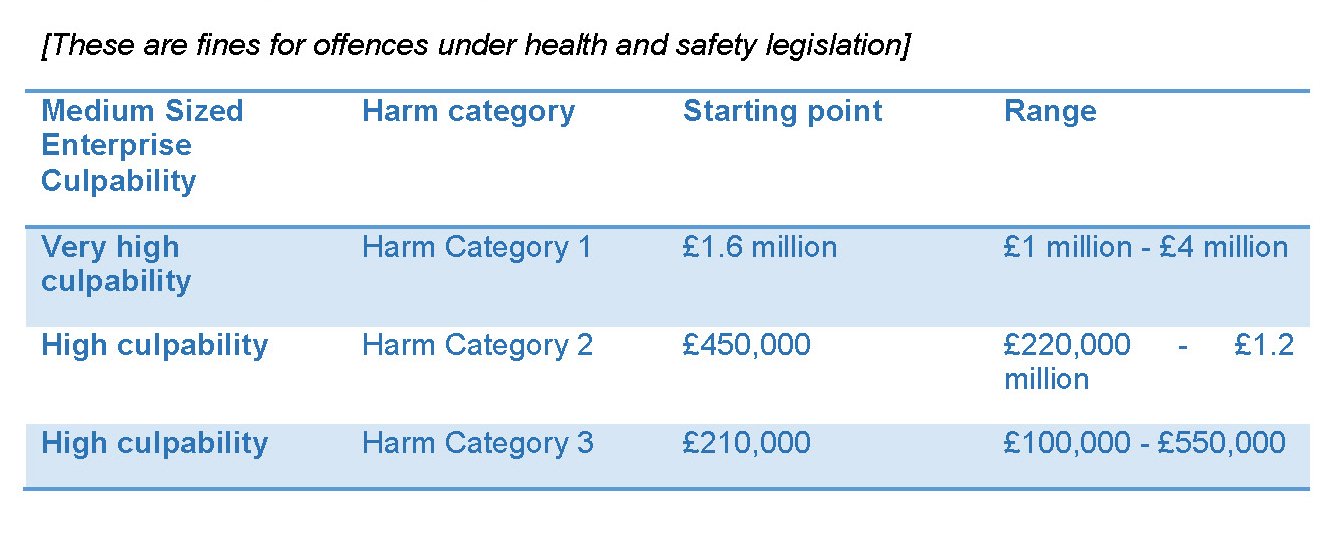Tougher safety sentencing guidelines on the horizon
Improved clarity and simplicity of punishment guidelines related to health and safety failures by companies and organisations are set to be introduced, according to Sunderland-based legislation experts, Cedrec.
The consultation on the new sentencing guidelines, proposed by The Sentencing Council, in conjunction with the judiciary, legal practitioners and stakeholders within industries affected by the new guidelines, aims make court judgements more appropriate to both offenders and offences.
The consultation follows the implementation of new environmental guidelines, which came into force in July 2014. The environmental guidelines apply to waste and environmental permitting offences in particular, and can lead to staggeringly high fines.
The proposed guidelines enable prosecutors to deliver sentencing and fines that are more consistent across the country. To decide a reasonable penalty, a ‘9 step’ guide has been released, which follows the model established in sentencing environmental offences. This ranges from compensation and confiscation based on the size and means of any offender and the level of co-operation with the investigation.
Sentencing will be determined depending on company size, then, using the following two factors to calculate the proportional fine: ‘harm’ and ‘likelihood’.
Harm is split into three levels, with ‘A’ being death and serious injury resulting in life long dependency, ‘B’ being physical injury and inability to work and ‘C’ being the remainder of outcomes where charges are applicable, such as minor injuries.
Each level is then divided into three likelihood categories: ‘high’, ‘medium’ and ‘remote’, to create a formula for specific harm categories to ascertain the culpability of offenders. Fines will differentiate based on company size and financial circumstances
In the following table, which uses breaches of health and safety legislation as an example, the ‘formula’ for the fine amount is calculated for an example medium-sized enterprise, usually considered to have a turnover of between £10 million and £50 million.
Very high culpability and Category Level 1 harm is illustrated to give the highest fines available to a medium sized enterprise, per single offence. Therefore, the final fine payable for four offences, as an example, could run to £16 million in the worst case scenario.

In the event of a single corporate manslaughter conviction, penalties are much higher. A medium sized enterprise can see sentences for a serious breach rise from £2 million to £5 million. In even more serious circumstances, a £4 million fine can rise to £7.5 million.
Amy Batch, legal author for Cedrec, said: “These are hefty fines and rightly so. For too long, cases have been handled with varying results. Companies should not consider the price of compliance by comparing it with the fines involved. The higher the fine, the more deterring it is. Furthermore, for those concerned, the fines are set out in such a way that damage and responsibility for the offence is taken into consideration.
“This makes the fines more proportional to the offences and fulfils the main purpose of these guidelines, to give more clarity and structure to punishments. There are still grey areas however, as the court can ignore a company’s previous offences when delivery their judgement, but it is progress on a clearer sentencing system.”
Tougher safety sentencing guidelines on the horizon
Improved clarity and simplicity of punishment guidelines related to health and safety failures by companies and organisations are set to
Safety & Health Practitioner
SHP - Health and Safety News, Legislation, PPE, CPD and Resources Related Topics
New flexible working legislation – what does it mean?
Government launches consultation on proposed Counter-Terrorism Bill
Legal Lens – Health and safety lessons to be learned from Timmins Waste Services’ prosecution

